Microcleidus
Microcleidus is an extinct genus of sauropterygian reptile belonging to the Plesiosauroidea. The species has 40 neck vertebrae and a short tail of 28 vertebrae. Fossils of the genus have been found in France, the Posidonia Shale in Germany and Luxembourg, and the Alum Shale Formation of England.
| Microcleidus Temporal range: Toarcian ~ | |
|---|---|
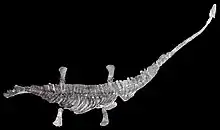 | |
| Fossil M. homalospondylus | |
| Scientific classification | |
| Domain: | Eukaryota |
| Kingdom: | Animalia |
| Phylum: | Chordata |
| Class: | Reptilia |
| Superorder: | †Sauropterygia |
| Order: | †Plesiosauria |
| Family: | †Microcleididae |
| Genus: | †Microcleidus Watson, 1909 |
| Type species | |
| Plesiosaurus homalospondylus (Owen, 1865) | |
| Other species | |
| |
| Synonyms | |
|
M. macropteus
M. tournemirensis
| |
Description

.jpg.webp)
The type species, M. homalospondylus, was the largest, measuring 5.1 m (17 ft) long and weighing 650 kg (1,430 lb). Other species were smaller: M. tournemirensis was about 4 m (13 ft) long and weighed 300 kg (660 lb), and M. melusinae was about 3 m (9.8 ft) long and weighed 120 kg (260 lb).[1][2][3]
Classification
Species include: Microcleidus homalospondylus (Owen 1865) and Microcleidus macropterus (Seeley 1865).
Occitanosaurus tournemirensis (originally "Plesiosaurus" tournemirensis), was named by Sciau et al. in 1990, based on a nearly complete skeleton of an animal approximately 4 meters (13 ft) long.[1] It was later found to be a species of Microcleidus.
The following cladogram follows an analysis by Ketchum & Benson, 2011.[4]
References
- Ketchum HF, Benson RBJ. Global interrelationships of Plesiosaur (Reptilia, Sauropterygia) and the pivotal role of taxon sampling in determining the outcome of phylogenetic analyses. Biological Reviews
- Valentin Fischer; Nikolay G. Zverkov; Maxim S. Arkhangelsky; Ilya M. Stenshin; Ivan V. Blagovetshensky; Gleb N. Uspensky (2020). "A new elasmosaurid plesiosaurian from the Early Cretaceous of Russia marks an early attempt at neck elongation". Zoological Journal of the Linnean Society. 192 (4): 1167–1194. doi:10.1093/zoolinnean/zlaa103. hdl:2268/251614.Supplementary Information
- Paul, Gregory S. (2022). The Princeton Field Guide to Mesozoic Sea Reptiles. Princeton University Press. pp. 108–109. doi:10.1515/9780691241456. ISBN 9780691193809. S2CID 251553177.
- Hilary F. Ketchum; Roger B. J. Benson (2011). "A new pliosaurid (Sauropterygia, Plesiosauria) from the Oxford Clay Formation (Middle Jurassic, Callovian) of England: evidence for a gracile, longirostrine grade of Early-Middle Jurassic pliosaurids". Special Papers in Palaeontology. 86: 109–129.
Bibliography
- Bardet, Nathalie; Fernandez, Marta; Garcia-Ramos, Jose Carlos; Superbiola, Xabier Pereda; Pinuela, Laura; Ruiz-Omenaca, Jose Ignacio; and Vincent, Peggy (2008). "A juvenile plesiosaur from the Pliensbackian (Lower Jurassic) of Asturias, Spain". Journal of Vertebrate Paleontology 28(1): 258–263
- Plesiosaur.com 13 Oct 2006
- Palæos.com 13 Oct 2006
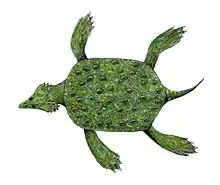
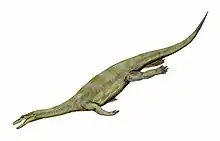


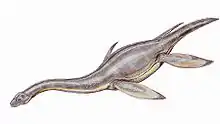
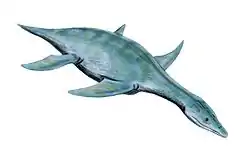
.png.webp)